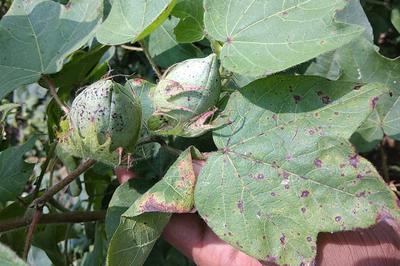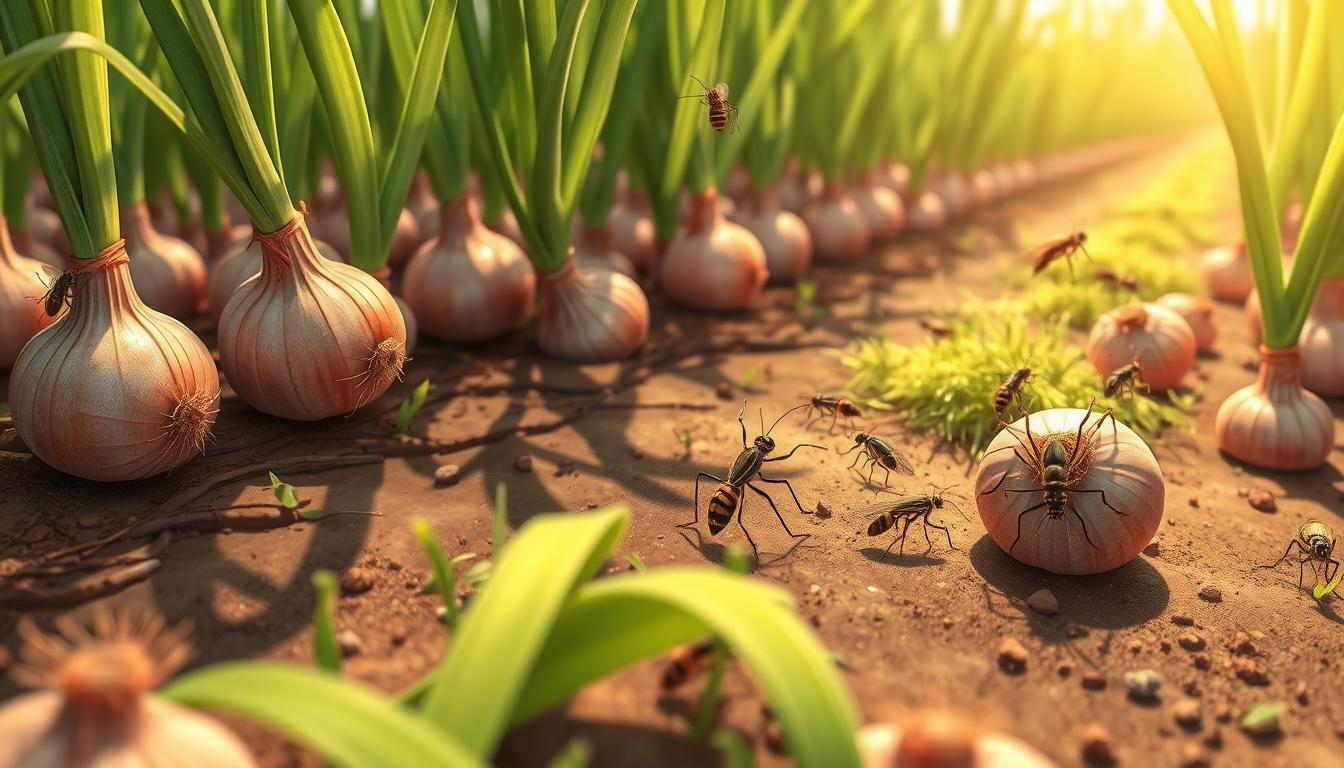Cotton Diseases: Overview, Symptoms, and Management

By Admin
Cotton (Gossypium spp.) is one of the world's most important cash crops, playing a vital role in the textile industry. However, various diseases can severely impact cotton production, reducing both yield and fiber quality. Understanding the major diseases affecting cotton, their symptoms, and management practices is essential for farmers and agronomists.
1. Fungal Diseases
A. Fusarium Wilt
Causal Agent: Fusarium oxysporum f. sp. vasinfectum
Symptoms
Yellowing and wilting of leaves, starting from the lower part of the plant.
Browning of vascular tissues.
Stunted growth and eventual plant death.
Management:
Use of resistant cotton varieties.
Crop rotation with non-host plants like cereals.
Ensure proper soil drainage to prevent waterlogging.
Apply biological control agents such as Trichoderma spp
B. Verticillium Wilt
Causal Agent: Verticillium dahliae
Symptoms:
Interveinal chlorosis (yellowing between veins).
V-shaped lesions on leaves.
Premature defoliation and plant wilt.
Discoloration of vascular tissues, especially in stems.
Management:
Planting resistant cotton varieties.
Soil solarization to reduce pathogen load.
Avoiding crops like potatoes and tomatoes, which are also susceptible to Verticillium.
Good soil management practices to reduce stress on cotton plants.
C. Anthracnose
Causal Agent: Colletotrichum gossypii
Symptoms:
Dark, sunken lesions on leaves, stems, and bolls.
Shedding of bolls and rotting of seeds inside the bolls.
Presence of pinkish to dark fungal spores on infected tissue.
Management:
Use of certified disease-free seeds.
Timely application of fungicides like azoxystrobin or mancozeb.
Crop rotation and destruction of plant debris after harvest.
D. Alternaria Leaf Spot
Causal Agent: Alternaria macrospora
Symptoms:
Small, circular brown spots on leaves, which later expand and coalesce.
Severe infection leads to premature defoliation.
Affected bolls become non-viable and may fall off.
Management:
Use of fungicides such as copper-based products or chlorothalonil.
Removal of plant debris post-harvest to prevent carryover of the fungus.
Monitoring of irrigation practices to avoid moisture stress.
A. Bacterial Diseases
Causal Agent: Xanthomonas citri pv. malvacearum
Symptoms:
Water-soaked lesions on leaves, which turn black and necrotic.
Angular spots along veins of leaves.
Bolls show water-soaked lesions that eventually crack open.
Systemic infection leads to stunted plant growth and significant yield loss.
Management:
Plant resistant varieties of cotton.
Seed treatment with bactericides like copper compounds.
Regular field monitoring and destruction of infected plants.
Crop rotation and deep plowing to bury infected residues.
3. Viral Diseases
A. Cotton Leaf Curl Virus (CLCuV)
Causal Agent: Begomovirus (transmitted by whiteflies)
Symptoms:
Upward curling and thickening of leaves.
Vein thickening and development of leaf-like structures along the veins.Stunted growth and poor boll formation.
Heavy infestations lead to drastic yield reduction.
Management:
Use of virus-resistant cotton hybrids.
Control of whitefly populations through insecticides like imidacloprid.
Use of reflective mulches to deter whitefly vectors.
Crop rotation and eradication of alternate weed hosts that harbor whiteflies.
4. Nematode Diseases
A. Root-Knot Nematode
Causal Agent: Meloidogyne incognita
Symptoms:
Formation of galls (knots) on the roots.
Stunted plant growth and yellowing of leaves.
Reduced boll production and poor fiber quality.
Weakened plants are more susceptible to other diseases.
Management:
Crop rotation with non-host crops like cereals.
Use of nematicides or soil fumigants.
Use of nematode-resistant cotton varieties.
Maintaining soil health through organic matter additions to improve microbial antagonism.
5. Parasitic Weeds
A. Cotton Striga (Witchweed)
Causal Agent: Striga gesnerioides
Symptoms:
Yellowing and stunting of the cotton plant.
Parasitic roots of Striga attach to the cotton roots, extracting nutrients.
Poor boll development and severe yield losses.
Management:
Uprooting and destruction of parasitic weeds before they flower.
Use of herbicide-coated cotton seeds to suppress Striga germination.
Crop rotation with non-host plants to reduce Striga seed bank in the soil.
Application of organic amendments to improve soil fertility and reduce parasitism.
6. Environmental/Physiological Diseases
A. Water Stress
Cotton is highly sensitive to both waterlogging and drought conditions. Proper water management is crucial for avoiding diseases associated with environmental stress. Over-irrigation can lead to root rot, while water deficit can trigger wilting and increased susceptibility to pathogens.
B. Nutrient Deficiencies
Nutrient imbalances, particularly nitrogen, potassium, and micronutrients, can cause physiological diseases in cotton. Leaf discoloration, poor root growth, and reduced boll size are common symptoms.
Integrated Disease Management (IDM) for Cotton
To effectively manage cotton diseases, an integrated approach is recommended. IDM combines various strategies to minimize the impact of diseases on cotton crops:
1. Resistant Varieties: Use disease-resistant cotton varieties to reduce the risk of infection.
2. Crop Rotation: Implement crop rotation with non-host crops to break the disease cycle.
3. Field Hygiene: Remove plant debris after harvest and destroy infected plants to reduce the source of inoculum.
4. Balanced Fertilization: Ensure proper fertilization to maintain healthy plants that can better resist diseases.
5. Biological Control: Utilize beneficial microbes and biological fungicides to control pathogens.
6. Chemical Control: Apply fungicides, bactericides, and nematicides as needed, based on field scouting and economic thresholds.
Conclusion
Cotton diseases pose significant challenges to farmers, especially in regions where favorable conditions for pathogens prevail. However, with proper identification, timely management practices, and the adoption of an integrated disease management strategy, the impact of these diseases can be mitigated. Continuous research and development of resistant varieties and improved agricultural practices are crucial to sustaining cotton production globally.

